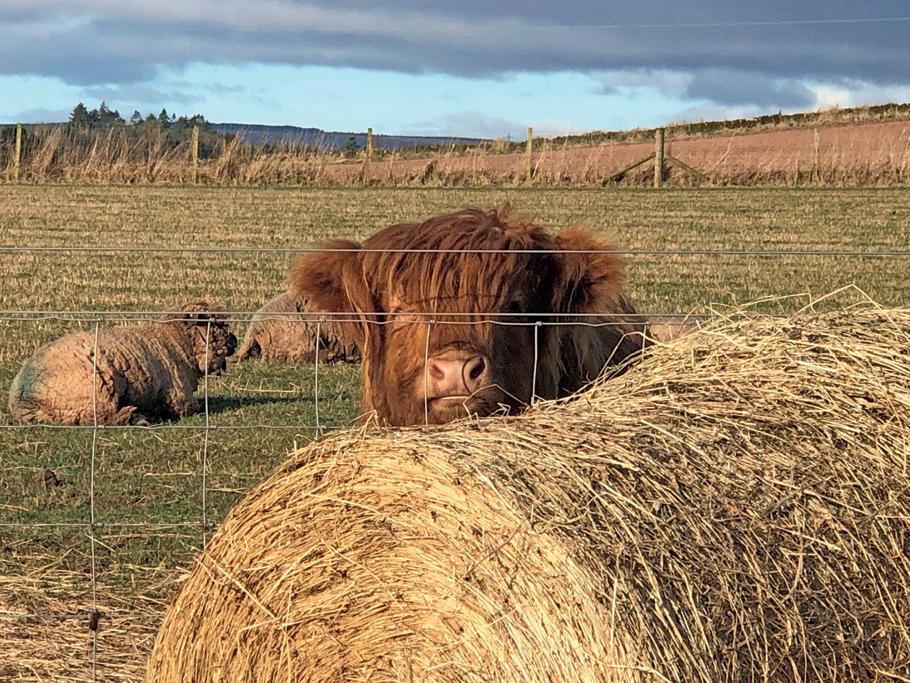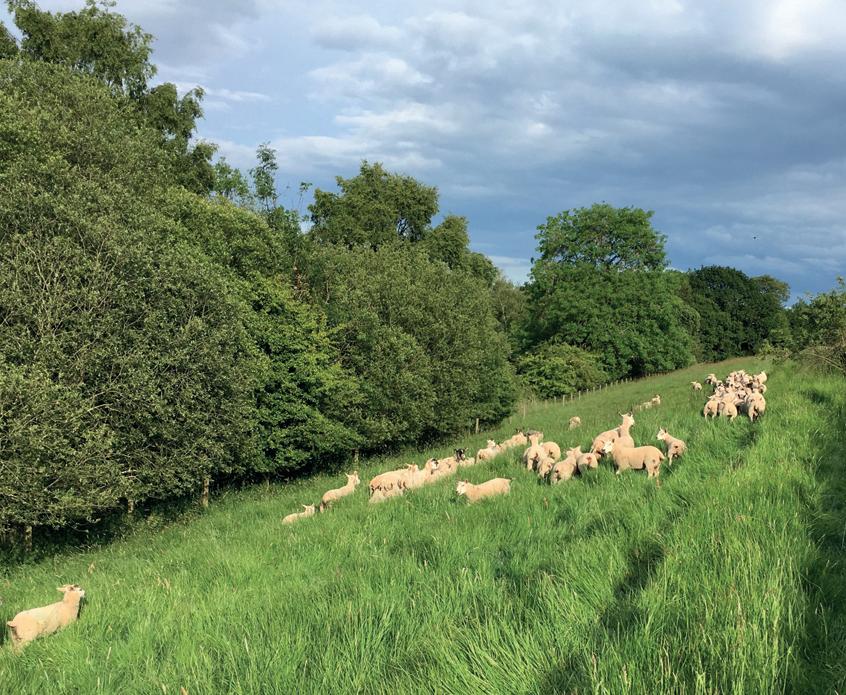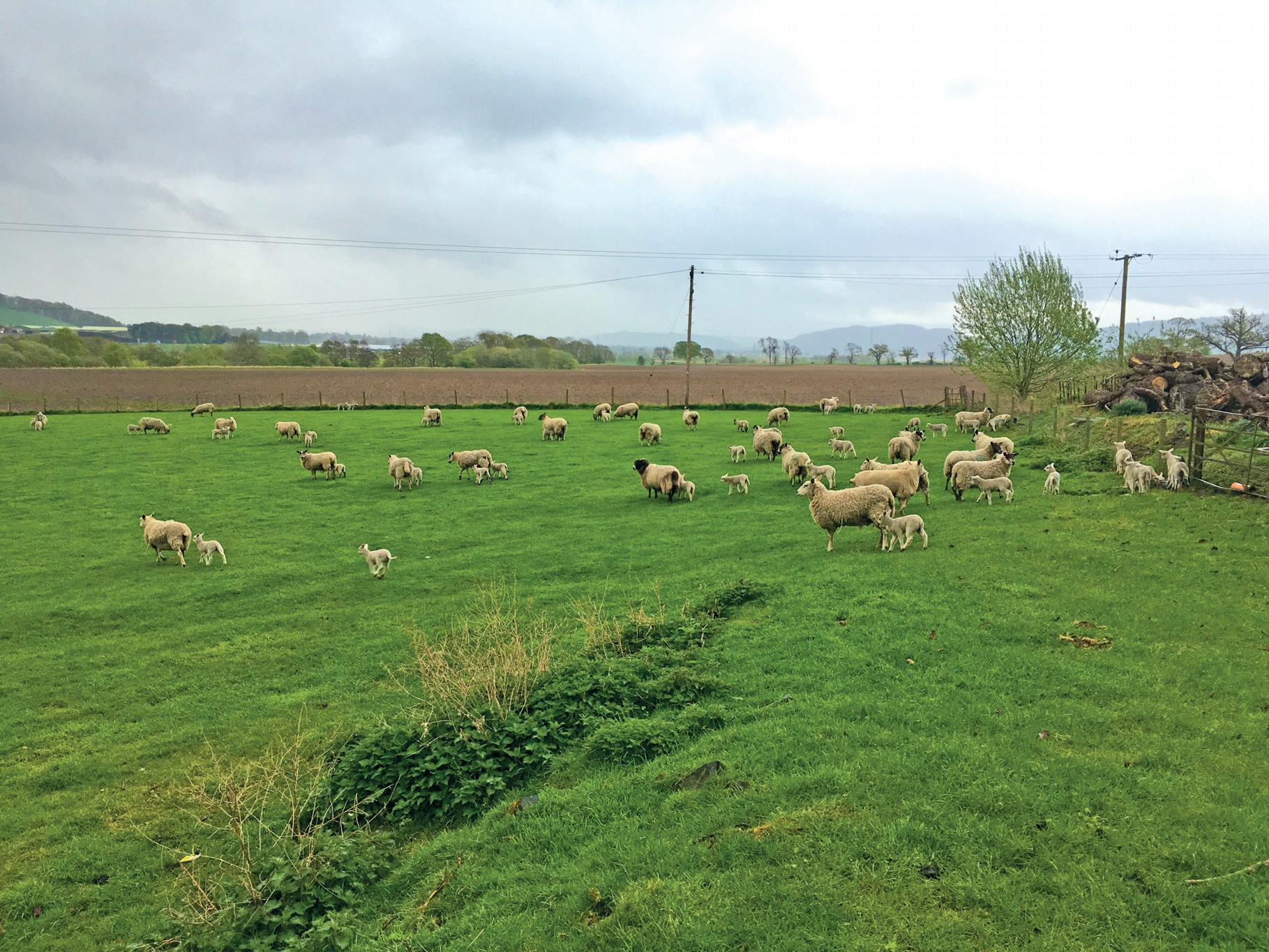
4 minute read
Smallholdings. Deliver the Rural Dream
The demand for smallholdings has been strong and rising across Scotland and the North of England over the past few years.
TV programmes advocating the benefits and personal joys of growing one’s own fruit and veg, having a few hens, making jam, bee keeping and even keeping sheep, pigs, goats and cattle, not to mention interest in green energy, conservation and flower farming, have resonated with many people from all walks of life.
Typically a smallholding will attract significant interest as soon as it comes to the market and in most cases will sell in a matter of weeks. This year has seen the market rise to new heights and there have been two factors acting as a catalyst. Firstly, many people have wanted to get on and realise a long-cherished ambition to own land in order to achieve a better quality of life, following all that this year has brought. Secondly the experience of working from home has demonstrated that connectivity is less of an issue in rural areas. In most parts of the UK either broadband speeds already provide comfortable access to remote servers in the office or there are workable alternatives – via satellite or a mobile connection.
Whether the desire is for a cottage with a few acres of land or a small farm extending to perhaps 20 or 30 acres will depend on the desired location and available budget. A good location, usually within about an hour of a large town or city, peaceful surroundings and an attractive rural setting are the prerequisites for most buyers. For those purchasing land for the first time Galbraith provides a onestop shop for bespoke advice – from selling the property itself to advice on agricultural subsidies, woodland creation, renewables, planning applications, connectivity, natural capital and more. So, what are the key points that those new to smallholding should consider? The desire for “ self-sufficiency often extends to an interest in creating a small renewable scheme on your landholding
The first priority is to register with the government as a landowner and a keeper of livestock – this can be done online and is relatively straightforward. In Scotland registration is via the Rural Payments and Inspections Division and in England via the Rural Payments Agency. Galbraith can advise if you are registering a smallholding for the first time.
The landowner must then register as a keeper of livestock with the Animal and Plant Health Agency; this is required to ensure that livestock movements are recorded, for the obvious management of any animal disease outbreaks. Anyone who owns cattle, deer, sheep, goats, pigs, and poultry if you have 50 birds or
more, must register. Bee hives are also subject to periodic inspections and should be registered with the authorities.



The Basic Payment Scheme (BPS) is the scheme for those who are actively farming and offers an annual return per hectare, for landowners owning 3 hectares or more. Most smallholdings will be eligible, depending on the size of the smallholding and having the necessary entitlements.
In some cases capital grants for infrastructure such as trees, fences and hedges may also be available, subject to specific conditions.
The desire for self-sufficiency often extends to an interest in creating a small renewable scheme on your landholding, whether that takes the form of installing solar panels, or investigating the potential for a small hydro turbine or wind turbine. Galbraith has extensive expertise in this sector and can offer tailored advice.
We advise prospective purchasers not to be too concerned if the property lacks sufficient sheds or outbuildings for their plans. For those new to smallholding or small scale farming, it may seem a challenge to construct a shed but in many cases it is relatively straightforward and it can be an advantage to create something to your own specifications.
There are however planning considerations that should not be overlooked. At the time of writing one client has just asked if planning permission is required for a horse ménage. Perhaps surprisingly the answer is that planning consent is indeed required. Galbraith has a planning team who work hand in hand with our agricultural consultancy team to advise clients.

Increasing interest in where our food comes from and in supporting local producers and local farmers has been much in evidence this year. Galbraith clients are typical of many in the countryside seeking high quality locally-sourced produce. The interest in growing your own goes very much hand in hand with supporting local producers, suppliers and outlets.
Properties with an established orchard are in great demand however the planning and planting of your own orchard can give the opportunity to be harvesting your first crop within two or three years, depending on the weather and varieties selected. There is great joy in watching your fruit trees grow, harvesting your own crop and enjoying the fruit either straight from the tree or made into jams, jellies or chutneys. This article only scratches the surface of the full range of considerations and issues that may be pertinent to smallholders. For land sales or purchases please contact Emma Chalmers or Martin Rennie for bespoke agricultural advice on a specific concern. n
Emma Chalmers 07899 877 732 emma.chalmers@galbraithgroup.com










